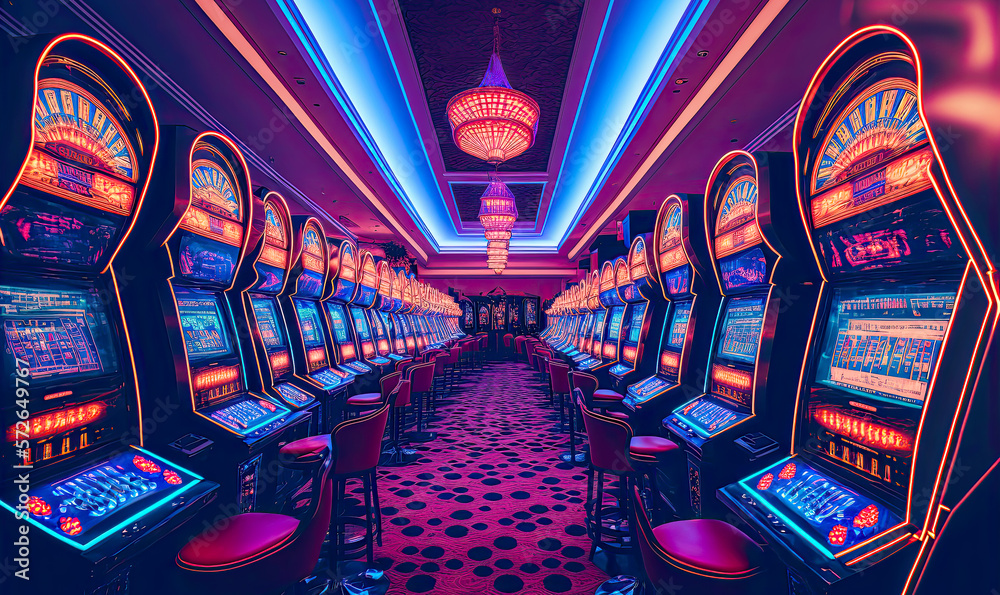
In the vibrant and exciting world of gaming establishments, where fortune and tactics intertwine, hues and aesthetic play a key role in attracting gamblers. From the moment visitors step inside a casino or log into a gaming platform, they are immersed in a visual feast that captures their attention and lures them to explore further. Bright colors, engaging graphics, and creative layouts are meticulously crafted to create an atmosphere of thrill and anticipation, ultimately enhancing the gaming experience.
While gamblers move through the dynamic landscape of casino games, they encounter a range of designs that not only serve visual purposes but also affect emotions and decision-making. Hues like scarlet and yellow symbolize riches and luck, while calm navy and greens can create a more tranquil environment. Understanding how these elements work together allows casinos to create an inviting and stimulating atmosphere that encourages players to engage with the games, invest additional time at the tables, and increase their general enjoyment.
The Study of Tint in Gambling Games
Color plays a key role in the development of gaming experiences, affecting players’ emotional states and responses. Bright and vibrant hues, such as crimson and gold, are often used to ignite thrill and draw attention. These hues create a sense of immediacy and vitality, encouraging gamblers to participate more enthusiastically with the activity. By strategically selecting hues, developers aim to elicit emotions of pleasure and excitement, which can enhance the overall game experience.
Different colors also have psychological associations that can affect how gamblers perceive their possibilities of winning. For instance, emerald is frequently associated with fortune and prosperity, making it a well-liked choice in games like the roulette wheel and poker games. This connection can lead participants to feel more hopeful and confident in their play, ultimately inspiring them to stake more. Comprehending these associations allows game creators to create environments that enhance player satisfaction and loyalty.
Moreover, the interface of gaming interfaces often utilizes gradients and opposing hues to guide players’ responses. For example, successful results may be highlighted with bright, differing shades, creating a visual incentive. This method strengthens successful results and encourages repeated participation. By utilizing the science of color, gaming venues can design games that not only draw players but also maintain them involved and committed in their game experience.
Creative Elements that Engage Gamers
The aesthetic appeal of casino games is primarily influenced by the use of vibrant colors. Bright and contrasting colors are strategically chosen to create an appealing atmosphere that captures attention. For instance, crimson and golds often signify luck and prosperity, which is why they are prevalent in the palettes of slot machines and table surfaces. These colors not only draw players in, but they also evoke emotions associated with thrill and expectation, enhancing the total gaming experience.
In parallel to color, the design and organization of gambling games play a crucial role in captivating players. Games are designed to be intuitive, ensuring that players can easily understand the guidelines and mechanics. Accessible interfaces, along with captivating graphics and animations, help maintain gamer interest and encourage longer play sessions. The tactile elements, such as the feel of the buttons and the audio of the games, also contribute to a holistic sensory experience that keeps players engaged.
Finally, conceptual elements in game design can significantly influence player choice. Many gambling games are inspired by popular culture, myths, or adventure themes, incorporating symbols and characters that resonate with players. These themes create a sense of engagement and connection, making each game feel unique. When players feel a bond to the concept, they are more likely to choose that game over others, leading to increased participation and enthusiasm within the casino environment.
Case Studies: Notable Casino Game Designs
One key example of impressive casino game design is the acclaimed slot machine series themed around blockbuster movies. Games such as those based on the Wizard of Oz and Game of Thrones utilize bright colors and top-notch graphics to immerse players in well-known narratives. The use of dynamic visuals and engaging sound effects captures the attention of players, creating an psychological connection to the theme. This tactic merely promotes longer play but also boosts the overall gaming experience, leading to increased player retention.
Another effective case is the application of color in table games like blackjack and roulette. Casinos often design these games with dark reds and greens, colors traditionally connected with luck and wealth. For instance, the emerald felt on a 21 table provides a soothing effect, while the crimson accents in roulette invite thrill. This intentional use of color helps to foster an inviting atmosphere that stimulates players to participate, addressing their psychological impulses and increasing their enjoyment. sports betting sites not on GamStop
Finally, social casino games that feature social features and bright, dynamic designs have experienced remarkable success in engaging players. Games like Zynga Poker and Slotomania leverage vivid colors and playful animations to create an inviting online environment. The integration of leaderboards, community sharing options, and in-app rewards encourages competition and community, attracting players in for longer sessions. Such designs merely make the games visually attractive but also underscore social connectivity, a vital factor in player retention and engagement within online casino environments.
